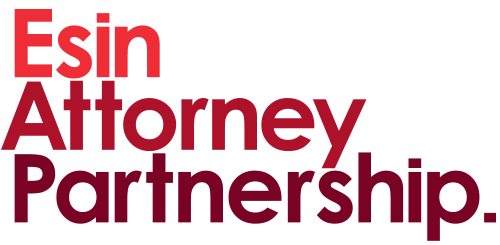![]() Click the button to listen to our legal alert now!
Click the button to listen to our legal alert now!
The Turkish Pharmaceuticals and Medical Devices Authority (TİTCK) recently published the (i) Good Pharmacovigilance Practices Guideline Module IX Annex I -Training Materials and Module VIII – Safety Communication and (ii) Guideline on Crisis Management in Pharmacovigilance Activities.
Please click on the relevant link below for our specific notes regarding recent developments.
The Good Pharmacovigilance Practices Guideline Module IX Annex I -Training Materials and Module VIII – Safety Communication
The Guideline on Crisis Management in Pharmacovigilance Activities
The Good Pharmacovigilance Practices Guideline Module IX Annex I -Training Materials and Module VIII – Safety Communication
New Development
On 27 April 2022, the TİTCK published the Good Pharmacovigilance Practices Guideline Module IX Annex I -Training Materials and Module VIII – Safety Communication.
The Good Pharmacovigilance Practices Guideline Module IX Annex I -Training Materials is available here (in Turkish).
The Good Pharmacovigilance Practices Guideline Module VIII – Safety Communication and Module VIII – Safety Communication is available here (in Turkish).
What’s New?
The Good Pharmacovigilance Practices Guideline Module IX Annex I -Training Materials
The guideline aims to guide license holders during submitting draft training materials to the TİTCK. The main regulations covered under the guideline are as follows:
- Training materials aim to minimize a significant risk and/or maximize the benefit-risk balance of a medicinal product as an additional risk minimization (aRMM) measure. Training material should comply with the summary of product characteristics and product information presented on the packaging and instructions and provide new information.
- The license holder must ensure that the training material complies with principles such as suitability for the target audience, no surreptitious advertisements, meeting risk minimization objectives and appropriate order and form.
- The training material should provide the messages included in the licensing conditions agreed with the EU or the TİTCK, depending on the regulatory procedure. The audience can be channeled to a website for detailed information regarding the training material upon the approval of the TİTCK.
- In the training material, visuals and graphics should only be used when text is insufficient and they should not be used for promotional purposes.
- Unless a different training material is recommended by the TİTCK or the license holder, the license holder must utilize the training material approved by the European Medicines Agency (EMA) in Turkey upon the TİTCK’s approval. The training material can be submitted to the approval of the TİTCK with the information and documents set forth under the guideline.
- The training material prepared for an active substance based on the first application will be announced on the TİTCK’s website upon approval. Subsequent applications for the same active substance must be prepared on the basis of the announced materials and submitted to the TİTCK for approval.
- The TİTCK will evaluate the training materials within approximately 60 days and publish the approved training materials on its website.
The Good Pharmacovigilance Practices Guideline Module VIII – Safety Communication
The guideline aims to guide license holders on information, communication and coordination regarding drug safety. The main regulations covered under the guideline are as follows:
- Disclosure of safety information to patients and healthcare professionals is necessary for pharmacovigilance activities to ensure the correct, safe and effective use of medicine; prevent damages arising from adverse reactions; reduce risks; and contribute to the protection of patient and public health.
- Among other things, information on drug safety should be in line with its purpose; clear, accurate and consistent; based on prior consultation with patients and healthcare professionals if necessary; pre-tested; contain explanations regarding risk and safety concerns; and circulated to the target audience in a timely manner.
- The security announcement should include information such as critical new information about the benefit/risk balance of the medicine; the reason of safety communication; information on the proposed amendments in the product information; and a reminder that suspected adverse reactions should be reported to the Turkish Pharmacovigilance Center (TÜFAM).
- The safety announcement can be published via the TİTCK, directly to healthcare professionals or mediums such as press releases, publications, social media and websites.
- Information letters for healthcare professionals should not be used for promotional/commercial purposes and disseminating information that does not need to be individually communicated to healthcare professionals, such as product information changes that do not affect the appropriate use of the medicine.
The Guideline on Crisis Management in Pharmacovigilance Activities
New Development
On 27 April 2022, the TİTCK published the Guideline on Crisis Management in Pharmacovigilance Activities. The guideline sets forth explanations such as the definition of crisis and risk, their characteristics, stakeholders’ responsibilities, examples of crisis and risk analysis, crisis management schemes and communication skills.
The guideline is available here (in Turkish).
What’s New?
Crisis and crisis management
As per the guideline, crisis is defined as an unplanned event or sequence of events that results in the disruption or destabilization of an organization’s normal operations. According to the guideline, organizations should have predefined thresholds for crisis and the crisis management plan should be implemented if a crisis event occurs. Within the scope of crisis management, organizations should be able to prevent crises or effectively manage them in cooperation with external stakeholders. The main purpose of crisis management is to predict and avoid crises.
Organizations should aim to ensure the following in a crisis:
- ensuring that the balance of success/failure is favorable for all parties,
- maintaining business capacity and continuity during and after the crisis; and
- preventing similar crises from occurring in the future or finding more effective ways of handling such crises.
Crisis management planning consists of stages such as crisis preparation; the establishment of a strategic crisis planning team, including executives from all departments and levels of the organization; gathering intelligence aimed at crisis prevention; general risk assessment; and trainings.
Risk and risk management
As per the guideline, risk is defined as the probability of encountering events that will have negative consequences in the future. To mitigate the possibility or consequences of the risks, organizations should evaluate potential impacts by determining risks qualitatively and quantitatively and develop solutions.
Risk analysis consists of three stages: (i) detection of all possible threats; (ii) estimation of the probabilities and consequences of risks; and (iii) placing the risk in the right perspective, prioritizing risk scenarios for planning and action.
Communication
The guideline sets forth the communication skills organizations should have during a crisis in detail. Accordingly, organizations’ communication should be open, balanced, honest and focused. In this context, in order to reduce the damages to be incurred and find prompt solutions to a crisis, organizations should prepare an effective communication plan for all audience groups such as healthcare professionals, pharmaceutical companies, consumers and pressure groups.
Conclusion
The TİTCK continues to provide guidance for companies working in the healthcare industry. Companies should carefully review the relevant laws and take necessary actions to ensure compliance.



